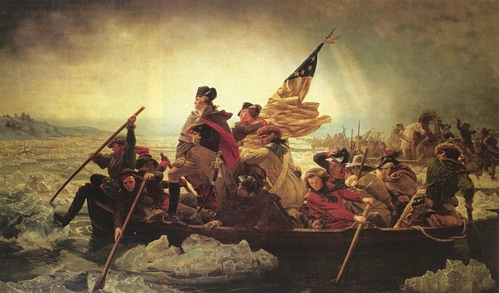A. GENERAL INSTRUCTIONS:
Multi-Age Learning: Families with several children develop their own methods for group instruction, but here is what we do:
- Aidan (age 13) listens to the family read aloud selection along with his siblings, or he may take the lead and read it aloud to them. I assign him one extra book to read during the study blocks. (So he had one extra “big kid” book to read during this block.) If he is short on time or has a class, I do not require him to listen to the family read-aloud especially if it is suited to very young kids.
- Claire (age eight) helps to read the book aloud in order to practice her reading skills.
- Dominic (age 5) listens while playing on the floor quietly or coloring/drawing.
Narrations and Writing:
- After we finish a family reading, I start with the youngest and listen to them tell me aloud what they learned or remember from the story. I will sometimes ask them to tell Dad what they learned when he returns home from work. This reinforces the lesson for them and brings Dad into the family learning experience.
- Dominic (5): I keep things very casual for Dominic, as he is a late bloomer. I offer him an opportunity to color a page or make a drawing inspired by something we’ve read, and to participate in the activity of the week, but these are not required. He often surprises me and comes up with a project on his own.
- Finding coloring pages: You can either do a google search for Revolutionary War coloring pages or purchase one of Dover’s beautiful coloring books for this period which can be purchased on Amazon.com. We like Story of the American Revolution Coloring Book.
- Claire (8):
- Narrations: Once a week I write down Claire’s narration and she may
illustrate the page. She will often find inspiration in one of our books or
from a coloring book. We place this page in her Book of Centuries. This year
she will begin the process of writing her own narrations, but she isn’t quite
ready yet. - Copywork: Once a week I also select one or two sentences from our reading and write it down neatly on our whiteboard. Claire copies it in her best handwriting on handwriting paper.
- Dictation: Usually the day after Claire has done her copywork, I dictate
the same sentences aloud to her while she writes them down. I give lots of
hints about important grammatical rules and challenging spellings in the
dictation selection!
- Narrations: Once a week I write down Claire’s narration and she may
- Aidan (13) writes book summaries for the “big kid” books I assign him to read. Other families may require essays on the reading, but Aidan is taking a separate very intensive on-line writing course so I keep the rest of his writing assignments pretty light.
B. BOOK LIST:
All 6 weeks:
- Non-fiction background: If You Lived at the Times of the American Revolution (Kay Moore) (read a few sections of this book each week)
- Older children: The following selections can be assigned to older children (middle school and high school)
- The American Revolution (Bruce Bliven). Excellent overview.
- Poor Richard (James Daugherty) (a lively biography about Benjamin Franklin) or Johnny Tremain (Forbes) (a novel about a 14 year old boy caught up in the Revolution).
- Project and craft ideas: American Kids in History: Revolutionary War Days (David King). Choose one activity to do each week if you have time.
- Videos:
- Younger ones: Liberty’s Kids (PBS). An animated history series told through the eyes of a young British girl. Highly recommended.
- Older kids: Liberty: The American Revolution (PBS). 6-part series describing how the Revolution evolved and how a new nation was born.
Weekly Reading Selections:
Week 1: George Washington
- George Washington (D’Aulaire)
- George Washington’s Breakfast (Fritz) (optional independent reading for a 7-10 year old)
Week 2: Benjamin Franklin:
- A Picture Book of Benjamin Franklin (Adler) or D’Aulaire’s Benjamin Franklin
- What’s the Big Idea Benjamin Franklin (Fritz) (optional independent reading for a 7-10 year old)
Week 3: Paul Revere & the Minutemen
- Sam the Minuteman (Benchley). This was a big hit with my 5 year-old boy; an excellent book for a younger independent reader to read aloud to her younger siblings.
- And Then What Happened Paul Revere? (Fritz) or A Picture Book of Paul Revere (Adler). The first selection is written at a higher reading level.
Week 4: Thomas Jefferson
Choose one of the following books depending on the age of your youngest learner.
- A Picture Book of Thomas Jefferson (Adler). Great for kids younger than 8.
- Thomas Jefferson: Father of Liberty (Ferris). This is a must-read if your youngest is older than 7.
Week 5: The Declaration of Independence & The Constitution
- The Fourth of July Story (Dalgliesh)
- A More Perfect Union: The Story of Our Constitution (Betsy Maestro)
Week 6: Catch up or intensive geography work
C: OPTIONAL EXTENDERS
Saints Lives: Elizabeth Ann Seton (1774-1821)
-
Saint Elizabeth Ann Seton: Daughter of America (Grunwell). This is an excellent read aloud for all the children, including the younger kids.
-
Mother Seton and the Sisters of Charity (Powers-Water). A Vision book. Another option if your youngest is older than 7 or so.
Art History:
-
Benjamin West: The Boy Who Loved to Draw: Benjamin West (Brenner). I chose West primarily because this lovely children’s book is available.
-
Two other notable artists to study are John Singleton Copleyand John Trumball. There are several adult coffee table type books for Copley if you just want to show your children the artist’s paintings.
